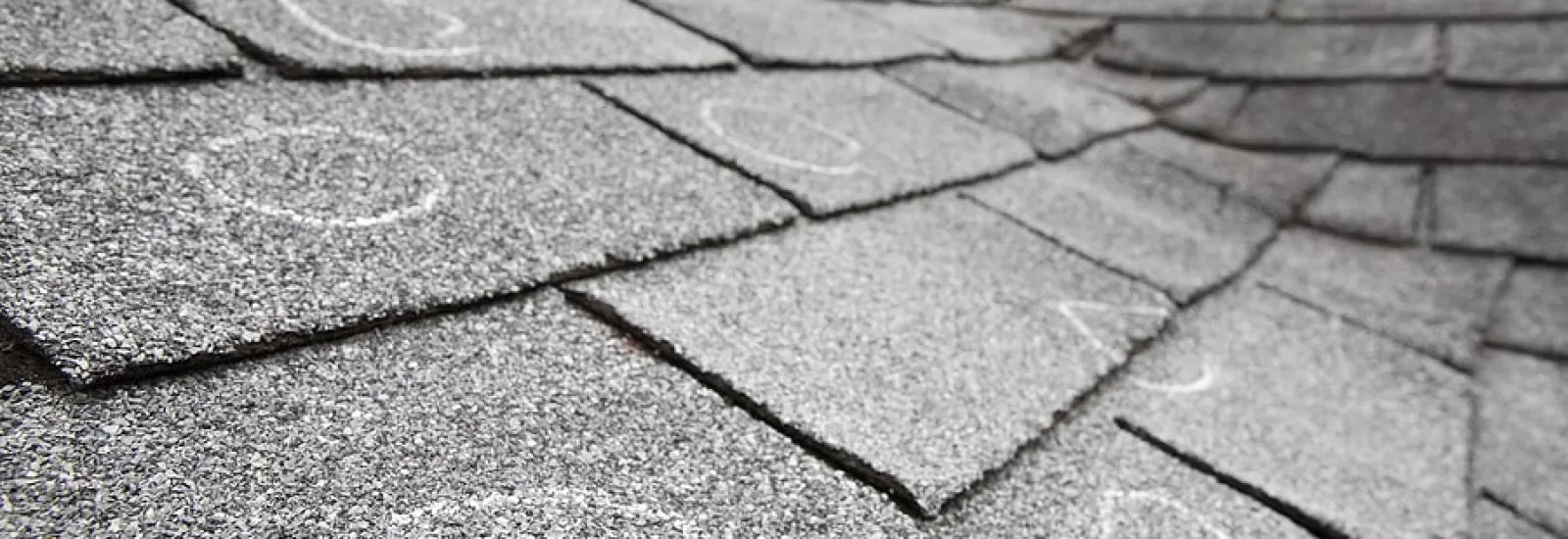Hailstorms continue to increase in frequency and intensity in the
United States. Just in 2019, more than 7.1 million U.S properties experienced damage from one
or more hail events. And in 2020 alone, NOAA Severe Weather Database
documented 4,590 large hail events. As the first line of defense
against Mother Nature's wrath, it's necessary for a roof to be able to protect
your home from the elements, hail included.
Sometimes it is easy to identify signs of hail damage on a roof such
as missing shingles, cracked tiles and dented metal; however, hailstorm damage
is frequently left unreported because the homeowner doesn't see any clear signs
of harm.
After the storm, a professional hail inspection is highly
recommended. While homeowners can complete an initial inspection by walking
around the property and looking for obvious signs of hail damage, roofing
contractors are experienced with identifying problems above and below the
surface of your roof. Below are some tips for identifying hail damage and when
to call a contractor.
What size hail damages a roof?
Hail comes in a range of
sizes. It can be as small as a pea and as large as a golf ball, and even a
softball! But what size hail damages a roof? It depends on the roofing material
and the age of the roof.
Hail typically needs to be the size of a golf ball before it is
capable of breaking through, but if there are high winds along with the hail,
or if the storm lasts longer than a few minutes, even small hail can cause
damage to a roof by removing protective granules. Without the granules, the
shingles are exposed to UV rays from the sun, which can deteriorate the shingle
and shorten the roof's life over time.
How to Tell If My Roof Has Hail Damage
Wait until the storm is over to check for signs of damage on your
roof. Some signs of destruction are identifiable from the ground, such as dents
in gutters and downspouts, air conditioners, decks and siding. Other damages
are harder to identify and either require getting on the roof or hiring a trained
professional.
Different roofing materials will exhibit damage from hail in varying ways. Below are some of
the common identifying symptoms from hail on the most popular roofing
materials:
Metal Roofs - Hail can cause dents in the metal panels, vents
and flashing. The seams can tear or peel, and white marks are often left
from where the hail chipped the roof coating.
Composition and asphalt shingles-
shingles - Granule loss, cracks in the
shingles and shiny or black impact marks are common after a hailstorm. The
fiberglass mat can be exposed or fractured. Sometimes, shingles will
bruise or have cracks that radiate out from the impact site of the hail.
Clay and concrete tiles - - Chipped, broken or shattered tiles are often the result of a
hailstorm. Tiles can also be broken at the edges, gouged and have star-shaped
fractures from where the hail struck.
Wood shingles - - Wood will commonly split or crack down the middle of the
shingle when damaged by hail, which can be identified by looking for red
or orange splits in the shingle. Wood that is naturally red will
eventually turn gray on the outside due to weathering and oxidation, so
when the shingle splits, the natural color of the shingle is exposed. The
shingles can also be dented or have splatter marks on the wood.
What to Expect From a Hail-Damaged Roof Inspection
If your roof suffers from hail damage, a roof inspection is
necessary. After a severe storm, many homeowners will call an insurance
adjuster. It's highly recommended that you get a second opinion from a roofing
professional. Oftentimes the contractor will agree with the findings from the
insurance company's inspection, but they might disagree too.
A contractor is trained and experienced to identify roofing issues.
For this reason, a roofing professional may find small cracks or lifted
shingles that the adjuster overlooked. If a contractor conducts the inspection,
the homeowner will receive a detailed report of the findings, in addition to a
customized plan to repair or replace any of the affected areas.
Whoever conducts the roof inspection should look for the following:
- Weakened roof seals
- Tears or holes in the protective
cover of the roof
- Split or damaged shingles
- Missing shingles
- Granules removed from the
protective coating
- Tile uplift of more than one inch
How to Tackle Repairs After a Hail Inspection
After a hailstorm, roof repairs are likely needed. These repairs can
be as simple as replacing one shingle and getting dents out of the gutters or
reroofing the whole house. This is why it's important to contact a roofing professional to perform
a hail inspection and complete the repairs.
If the roof suffers extreme damage, it might be time to consider
changing roofing materials to a more durable option that will not only protect
your home during the next storm, but also improve your home's energy
efficiency.
When looking for a roofing material, ensure it has a Class 4 rating,
which is an impact standard used to rate materials such as shingles and metal.
The Underwriters Laboratories (UL), a not-for-profit testing organization,
provides information that helps consumers make informed decisions about various
products. They developed the UL 2218 Impact Rating to test the impact resistance of
roofing materials. Shingles are rated Class 1 through 4, with 4 being the
highest resistance and the highest level of protection against hailstorms,
which results in lower insurance premiums and lifetime roof costs, in addition
to fewer roof repairs and replacements.
